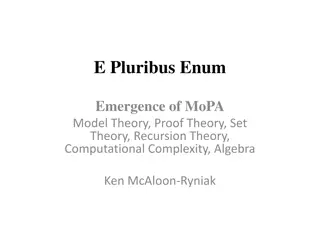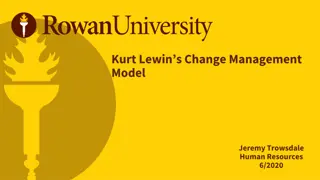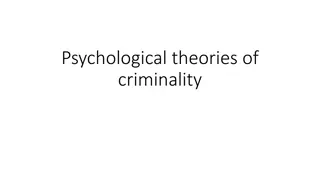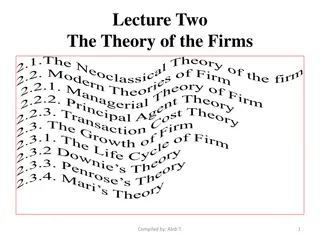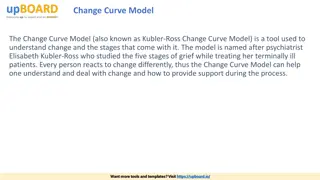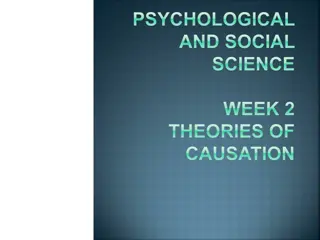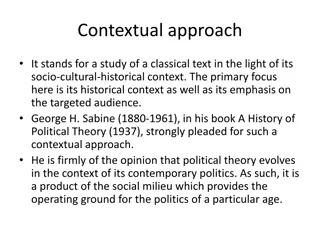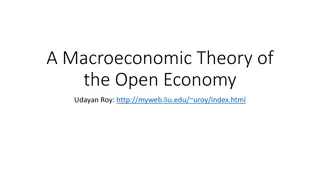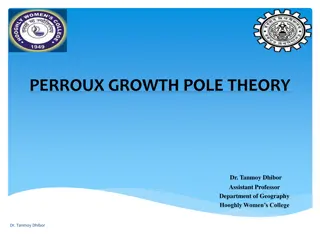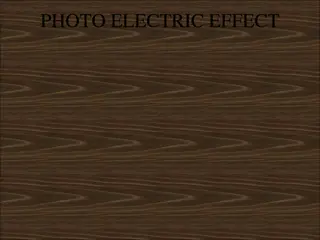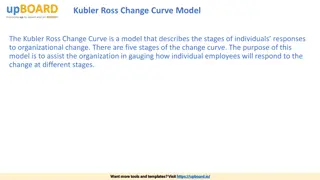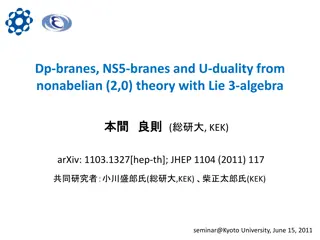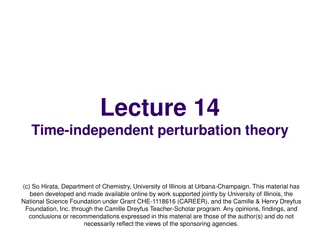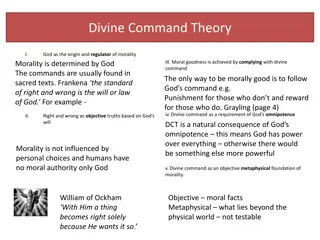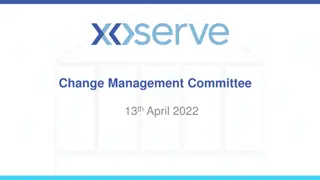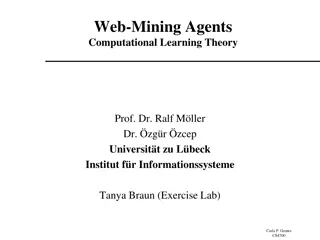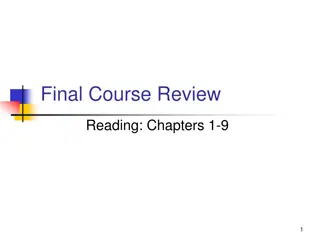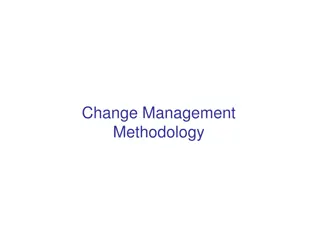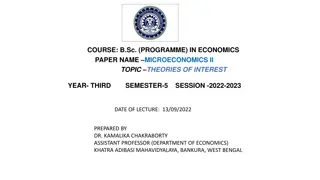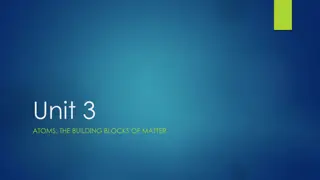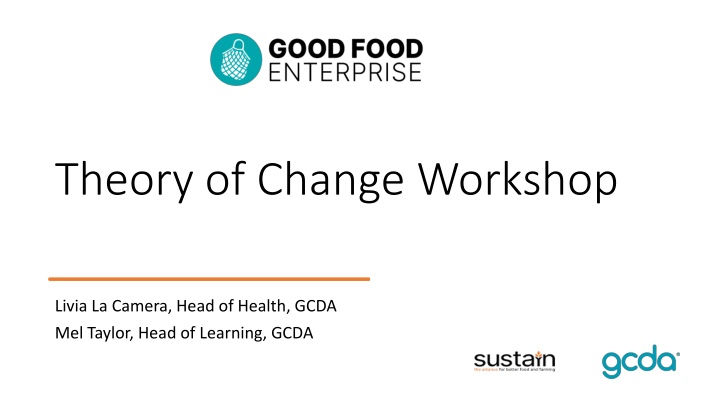
Understanding Theory of Change and Its Applications
Theory of Change is a strategic approach that outlines how and why a desired change is expected to happen in a specific context. By mapping out the relationships between activities, outcomes, and goals, it enhances project development, communication, evaluation, and addressing complex social issues.
Download Presentation

Please find below an Image/Link to download the presentation.
The content on the website is provided AS IS for your information and personal use only. It may not be sold, licensed, or shared on other websites without obtaining consent from the author. If you encounter any issues during the download, it is possible that the publisher has removed the file from their server.
You are allowed to download the files provided on this website for personal or commercial use, subject to the condition that they are used lawfully. All files are the property of their respective owners.
The content on the website is provided AS IS for your information and personal use only. It may not be sold, licensed, or shared on other websites without obtaining consent from the author.
E N D
Presentation Transcript
Theory of Change Workshop Livia La Camera, Head of Health, GCDA Mel Taylor, Head of Learning, GCDA
What is theory of change?
https://www.youtube.com/watch?v=cg4J1g0IVHg https://www.youtube.com/watch?v=BJDN0cpxJv4 Videos
TOC definitions Theory of Change is essentially a comprehensive description and illustration of how and why a desired change is expected to happen in a particular context. It is focused in particular on mapping out or filling in what has been described as the missing middle between what a program or change initiative does (its activities or interventions) and how these lead to desired goals being achieved. It does this by first identifying the problem, and the desired long-term goals and then works back from these to identify all the conditions (outcomes) that must be in place (and how these related to one another causally) for the goals to occur. These are all mapped out in an Outcomes Framework.
The Outcomes Framework then provides the basis for identifying what type of activity or intervention will lead to the outcomes identified as preconditions for achieving the long-term goal. Through this approach the precise link between activities and the achievement of the long-term goals are more fully understood. This leads to better planning, in that activities are linked to a detailed understanding of how change actually happens. It also leads to better evaluation, as it is possible to measure progress towards the achievement of longer-term goals that goes beyond the identification of program outputs. https://www.theoryofchange.org/what-is-theory-of-change/
Why do you think this could be a helpful approach?
This could be used for? Internal project development helps refine and enhance the effectiveness of your project External communication to tell people what your project/organisation does, and how it has an impact in a clear and convincing way Evaluation it s the first step in designing effective evaluation tools as it identifies all your outcomes that need to be measured To help develop a new project Distinguishing the income generation outcome from the social outputs of a social enterprise Understanding the steps that are missing Explain and justify why you're doing what you're doing Tackling a social issue with complex and has multiple causes
Identify your project aims/ goal e.g. emergency food aid or tackling poverty Collect evidence of need and context Write it in a group to capture input from staff, stakeholders, and even beneficiaries facilitate the creative process Agree your intended impact Identify your outcomes (can be short, medium, and long-term) how are they measurable? Identify outputs and activities Identify causal links arrows that show which activities lead to which outcomes, and which outcomes lead to which goal Clarify assumptions these underpin each causal link Establish a timeline and plan resources Produce your framework and narrative for external and internal use Get ready to use your theory of change How to implement a theory of change
What is the problem you want to solve? What evidence do you have or what needs assessment have you done? What is the long-term impact you want to see the desired state? What are the outcomes that will help you achieve a solution to this? What are the activities you doing to solve it? What are the outputs you will measure? Who do you need to involve in the process? How have you made your assumptions? How do you know the outputs and activities will lead to the outcomes? Your turn
PROBLEM ACTIVITIES OUTPUTS OUTCOMES DESIRED STATE Many families in areas of high social deprivation lack affordable access to fresh fruit and vegetables, leading to poor diet, poor health and a lack of awareness of the benefit of fruit and veg. Purchase of fruit & veg through wholesale partners Picking up, sorting and delivering fruit & veg to schools & children centres Tracking orders and monitoring and evaluating project Accept healthy start voucher at stalls Volunteer training Employ 1 person 15 stalls in Greenwich 10 volunteers trained Collate 10 case studies from each site Reach 2,000 families in first year No. of Healthy start beneficiaries using voucher at stalls No of recipes shared with families Testimonies Improved health Increased variety of fruit and veg eaten Increased use of Healthy start vouchers to purchase F & V Increased knowledge of how to use fruit and veg i.e. via recipes More families from the areas of highest social deprivation to have access to a wider variety of fresh affordable F & V and to have more opportunities for families to feed their children healthy food and to be healthier
Problems Activities Outputs Outcomes Desired state Assumptions Context Assumptions Assumptions
Further reading & Examples https://www.theoryofchange.org/ NCVO Knowhow lots of information Fareshare Community Food and Health The Kindling Trust Nesta Guidance Fareshare Theory of Change

